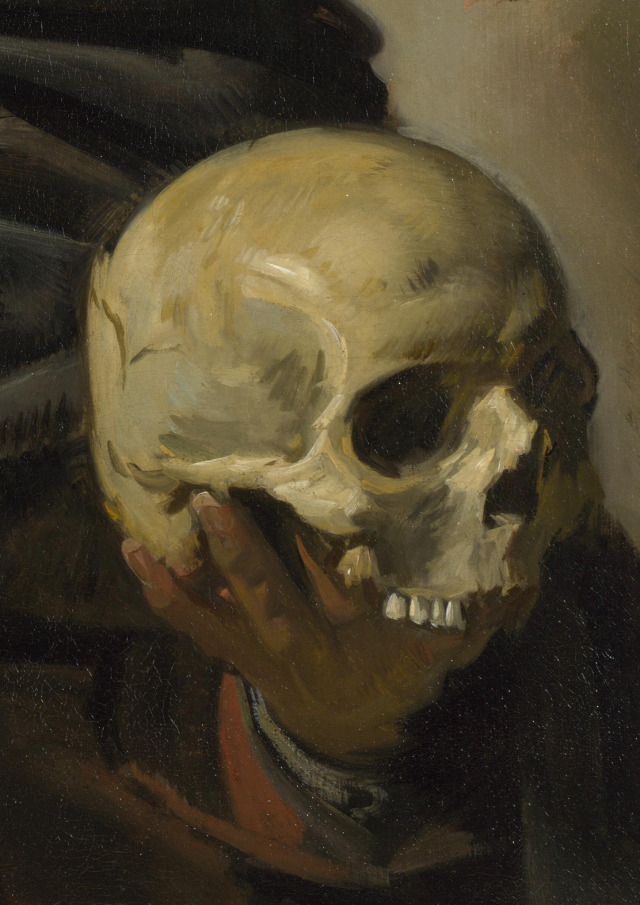#frans hals

Georg Seligmann (April 22, 1866 - 1924) was a Danish genre painter who had studied with P.S. Krøyer and Laurits Tuxen, after which he traveled extensively abroad, studying old masters (particularly Frans Hals).
He exhibited at Forårsudstillingen at Charlottenborg and later at Den Frie. He did quite a few architecture paintings and portraits, including a whole show of “Doctor portraits” (apparently he was hospitalized for long periods towards the end of his life).
He is represented at Den Hirschsprungske Samling and Statens Museum for Kunst, from where this canvas comes:
Ukrudt. En kvinde i et landskab, 1888 - oil on canvas (SMK)
Judith Leyster, Self Portrait, c.1630 Image from http://commons.wikimedia.org/wiki/File:Self-portrait_by_Judith_Leyster.jpg
Post link
Today’s piece of gender non-conforming / erotic art history is a c. 1615 painting by the Dutch Golden Age painter, Frans Hals, the title of which is commonly translated as both “Shrovetide Revellers“ (1) and “Merrymakers at Shrovetide” (2). Shrovetide, being another term for “Mardi Gras”, “Fat Tuesday”, and “Carnival”, was marked by lavish feasts, costumes, and celebrations marked by great excess. (3)
In this scene, a drunken teenage boy who appears to have been pronounced “queen for a day” lifts his hand in pronouncement while surrounded by Shrovetide revelers as they stand before a table a table loaded with food containing heavy sexual imagery of the day. The boy (potentially representing an actor at a time when female stage parts were typically performed by teenage males) is dressed in feminine clothing generally reserved for high nobility while flanked by two popular satirical theater characters of the time, being Pekelharing (Pickled Herring) on the left and Hans Worst (John Sausage) on the right. (2)
Pekelharing has his arm around the teen with a somewhat bawdy expression on his face while the merry teen, whose face appears to be flushed with alcohol, lifts his hand in pronouncement. This is in keeping with the laurel wreath placed around his head lending itself to the suggestion that he has been made “queen for a day” as a part of the festivities. (2) Meanwhile, two people on either side of them lean in observing the scene while six more figures in the background are visible members of an implied to be much larger crowd of merrymakers.
The Metropolitian Museum of Art’s very in depth article (linked in the reference section and recommended for anyone interested in additional reading on the piece) goes into further detail on the significance of the two comedic characters and the sexual symbolism of the food:
“These names [Pekelharing and Hans Worst] were assigned to stock figures in satirical comedies, which were performed by chambers of rhetoricians, or rederijkers, usually in private rooms. The organizations were exclusively male, and the humor often coarse. Hals himself was a “second member” or “friend” of a Haarlem chamber of rhetoric; this painting must have been inspired by his familiarity with rhetoricians, and was perhaps intended for a chamber of rhetoric, an individual rederijker, or an enthusiast of bawdy plays.
In any case, the subject and symbols were too lewd for the average Haarlem household. Pekelharing wears a garland of Shrovetide victuals, including salted herring and mussels, which symbolized male and female genitals. Eggs, also present in the garland, were considered an aphrodisiac and were a sign of male prowess or, when cracked (as here), impotence. The figure wears a pig’s trotter, symbol of gluttony, and holds a foxtail, emblem of foolishness. Sausages dangle from Hans Worst’s cap and are also on the table, which is strewn with an array of items alluding to “male” and “female” forms, including the bagpipes and open tankard.” (2)
REFERENCE / FURTHER READING
(1) WIKIPEDIA IMAGE: “Shrovetide Revellers”
(2) METROPOLITIAN MUSEUM OF ART: “Merrymakers at Shrovetide“
https://www.metmuseum.org/art/collection/search/436622
(3) WIKIPEDIA ARTICLE: “Carnival”
https://en.wikipedia.org/wiki/Carnival
REVOLVY ARTICLE: “Strovetide Revellers”
https://www.revolvy.com/main/index.php?s=Shrovetide%20Revellers
WIKIPEDIA ARTICLE: “Frans Hals”
https://en.wikipedia.org/wiki/Frans_Hals
WIKIPEDIA ARTICLE: “Shrovetide”
https://en.wikipedia.org/wiki/Shrovetide
Post link

Detail: Young Man with a Skull, by Frans Hals, 1628


